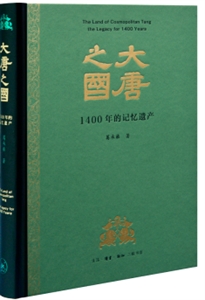Eight faces of the Tang Dynasty

The Tang Dynasty 1400 Years Ago
The Tang Dynasty (618–907) was a great empire with nearly 300 years’ history. The recently published book The Tang Dynasty 1400 Years Ago is not a comprehensive history of the Tang Dynasty, but a work that attempts to survey the Tang Dynasty’s eight different faces.
First, the work explores the Tang’s comprehensive national strength. It reinterprets the internal and external wars of the Tang Dynasty as an eradication of the threat of surrounding enemies in defense of national security and development. It also attributes the Tang’s prosperity, national fusion, and many tributary nations to the guarantee of its hard power. At the same time, the soft power and smart power of the Tang Dynasty is fully displayed in its inclusiveness of foreigners and non-Han people and its embrace of foreign civilization. In addition to Confucianism, Buddhism and Taoism, the author draws a map of the Tang Dynasty with pluralistic spirituality including Nestorianism, Zoroastrianism, Manichaeism and other Persian religions, and he refutes the remarks of some scholars that there was “mediocrity in a flourishing age.”
Second, the author chooses several interesting perspectives to describe the society of the Tang Dynasty. For example, when discussing the characteristics of immigrants in the Tang Dynasty, the author sorts out two types, including the non-Han people who moved to the interior from frontiers such as Tujue, Va zha, Tiele, Sogdia, Persia and Korea and then the southward migration of the mainland population.
The third focuses on the royal economy. The book elaborates on the capital granary of the Tang Dynasty—its location, scale, management system and functions. The author also focuses on the imperial treasury, which directly reveals the ups and downs of national power and becomes a symbol of the Tang’s economic foundation.
Fourth, the author tries to portray important historical figures and unnamed pawns of the Tang Dynasty. For instance, addressing the newly unearthed headstone of Gao Lishi in Xi’an, the author says that this eunuch has been bearing the shame of over-exaggerated crimes to this day. He points out that as a close official of Emperor Xuanzong (r. 712–756), although Gao was always in charge of certain imperial powers, he was not the decisive figure who led to the decline of the Tang Dynasty.
The fifth is about the Tang’s cultural aspects. From the simple style of dress in the Zhenguan period (627–649) to the gorgeous style in the Kaiyuan period (713–741), and to the returning of simplicity after the An Lushan Rebellion (755–763), the strong impact of foreign fashions can be clearly seen in the Tang’s clothing.
Rich in content, this book also covers other faces of the Tang Dynasty such as the Buddhism in that period and the Tang’s cultural relics.
edited by YANG LANLAN

 PRINT
PRINT CLOSE
CLOSE